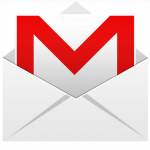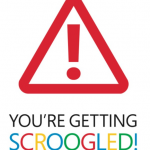Outlook.com now lets you chat with friends ‘stuck using Gmail’

After nearly two months of using Microsoft’s services almost exclusively, I made the painful decision to switch back to Google for most of my web needs. I say "most" because I’m still using, and enjoying, Outlook.com.
My decision to stick with Microsoft’s webmail service seems well founded, as the company is adding more features all the time. It introduced Skype support two weeks ago, and from today is rolling out the ability to directly message your Gmail-using contacts. Or "friends stuck on Gmail" as Microsoft amusingly phrases it.
Gmail breaks iOS chains

Yesterday (yeah, yeah, I'm late), Google released a stunning new version of Gmail for iPad and iPhone. I tried to write this story several times on May 6, but the newsroom was short-staffed, keeping me extra busy. Vacations, bank holiday in United Kingdom and Orthodox Easter Monday just about emptied BetaNews. So, please, pardon this belated story about the great Google escape.
What a wild one, too. Control-freak Apple uses Safari to keep developers like Google in check. Especially such a rival that invades iOS with a remarkably rich set of apps tightly tied to myriad web services. So Gmail's sudden liberation is quite surprising. Links now go to installed Google apps -- gasp, Chrome, Maps and YouTube -- rather than opening Safari. Chrome linkage really is a shocker, and all the more so with Google kissing WebKit to the wind in favor of its own browsing engine. Expect it in the Chrome stable channel soon.
Gmail gets better Google Calendar integration

If Google does not already rule your internet world, then it is still aiming to do so. Gmail, Calendar, Drive, Docs -- the company aims to offer you everything. Now it looks at integrating more of these features to make things a bit easier for customers, adding better Calendar options right into the email app.
"If you do a lot of scheduling over email, it's now a little bit easier to create events directly from your Gmail. Now available: dates and times within emails are lightly underlined: click them to schedule that conference call or lunch date without ever leaving Gmail" says Google product manager Boris Khvostichenko.
Toasts&Tiles manages Gmail in Windows 8

What do you do when you need to check your email? Fire up Outlook or Thunderbird? Launch Chrome and head over to the Gmail website? Having to do this throughout the day is a waste of time, and it’s a waste of time that Toasts&Tiles for Gmail aims to address. As you’d probably guess from the name, this is a Gmail client that includes support for toast notifications as well as live tiles.
With the app running constantly in the background, you will be notified whenever a new email hits your inbox. There’s no need to keep manually checking, breaking away from what you’re doing and losing your train of thought -- if there’s something you need to know about, the app will let you know.
Google Q1 2013 by the numbers: $13.97B revenue, $9.94 EPS

Google may be a company of many personalities -- browser and operating system developer, connected-device manufacturer, fiber-optic Internet servicer, search giant and social network, among many others. But the core business is still about one thing: Advertising, as calendar first quarter results, delivered today after the closing bell, show.
Revenue rose 31 percent to $$13.97 billion, year over year; operating income, excluding Traffic Acquisition Costs, was $3.48 billion, up from $3.39 billion. Net income climbed to 3.35 billion up from $2.89 billion. That's $9.94 earnings per share, including costs associated with discontinued operations.
Switching from Google to Microsoft, part 3 -- A positive Outlook.com

As someone who switched from Hotmail to Gmail in 2004 and then never looked back, moving to Outlook.com has been quite a weird experience (setting it up was fun in its own right). Some people hate Gmail’s interface, but if you’re used to it, using anything else seems odd.
That said, I’ve adapted to Outlook.com pretty quickly. It feels a bit like going back in time, using an interface similar to the ones I used in the past, but it doesn’t feel dated -- quite the opposite actually -- and I’ve grown to really like it in the short period of time I’ve been using it as my email service.
Google brings new compose message box to all Gmail users, like it or not

Say, you know that new pop-up compose message box Google introduced last autumn. You don't? Well, get ready. Gmail is giving the ditty to everyone, whether or not wanted. That's what it looks like, in photo right.
"The new compose will be rolling out to everyone over the next few days", Phil Sharp, Gmail product manager, says. I've used the thing since October, in a sort of love-hate thing. On a laptop working in Chrome -- even better, on Chromebook Pixel -- the new compose box is great. On Surface Pro, using Internet Explorer 10 from Modern UI, the thing is unusable. The box flicks up and down from the bottom of the screen.
Gmail for Android gets a whole lot better

I'm no big fan of Gmail, which interface is overly-cluttered and uses arcane methods for managing messages. But I can tolerate the service on Android devices, where there are no annoying ads and more sensibly-presented core functions. Today, Google made Gmail for Android a little better, by way of the Notifications menu.
Small things often have big impact. Users can now reply or archive messages right from the Notifications bar -- fast and furiously. For people like me who happen to procrastinate email, perhaps there is a future with an empty inbox and all communications current. There's more.
Third-party alternatives to official Google apps for Windows Phone 8

If you're the sort of person deeply rooted in Google services, at first glance migrating to Windows Phone 8 from either Android or iOS can be a total drag. The information giant has released a single app so far, which can be used to search the web, but nothing else. Luckily, there are plenty of third-party alternatives to choose from that offer decent and sometimes superior experience for Google users.
But finding the right replacements can be tricky, as the Windows Phone store features more than 130,000 apps and a simple search query returns many results of variable quality -- some great, some not so great. To make your job easier, I've prepared a list of Windows Phone 8 alternatives to traditional Google apps, ranging from Google+ to Google Maps, Google Reader and even YouTube.
Best Windows 8 apps this week

Nineteenth in a series. Welcome to this week's episode of our ongoing series about some of the best new apps that released this week for the Windows 8 operating system.
The app count grew to 31,448 apps in the US Windows Store, which is an increase of 1,149 apps in total; 824 of those apps are listed as free in the store while the remaining 325 apps are listed commercial applications or desktop programs listed in Store.
Running out of space in your Google Apps Gmail account? FreeSpace offers the perfect solution

When Google first introduced the world to Gmail back in 2004, its 1GB of free storage space for messages seemed unbelievably generous. How times change. Since then of course, it’s upped the figure to 10GB, but for a lot of people that’s nowhere near enough. Businesses get a much more substantial 25GB through Google Apps, but even that can be restrictive -- especially if you have to send, receive and store a lot of large attachments.
Cloud-to-cloud backup and recovery firm Backupify can’t do anything about the lack of space for consumers, but it is offering a new free solution for firms. FreeSpace actively monitors the amount of space available in Google Apps Gmail accounts and makes it easy to free up as much space as you need, whenever you need it.
Microsoft launches 'Don’t Get Scroogled by Gmail' campaign to stop Google 'going through personal emails'

Microsoft's efforts to downplay Google's Gmail over its own Outlook.com service are well known amongst the tech crowd. In late-November the Redmond, Wash.-based corporation claimed that a third of new Outlook.com signups were people switching from Google's email service, and after the web giant dropped support for EAS, Microsoft quickly advised Gmail users to make the same switch. Now Microsoft is at it again, launching a new crusade titled "Don't Get Scroogled by Gmail".
The purpose of the campaign, according to the software firm, is to "educate consumers that Google goes through their personal emails to sell ads". Don't Get Scroogled by Gmail is aimed at American Gmail users and is supported by a GfK Roper study commissioned by Microsoft that found "70 percent of consumers don’t know that major email providers routinely engage in the practice of reading through their personal email to sell ads", with a vast majority of people, 88 percent, disapproving of this practise once the information was brought to their attention.
Google extends Exchange ActiveSync support for Windows Phone

In mid-December, as part of the "Winter cleaning" operation, Google announced plans to drop support for Exchange ActiveSync effective January 31. Microsoft condemned the decision, and quite vigorously.
Matters are changed. Windows Phone users will get a six-month reprieve, until July 31, to give Microsoft time to adapt. "The Windows Phone team is building support into our software for the new sync protocols Google is using for calendar and contacts -- CalDAV and CardDAV", Microsoft's Michael Stroh says. The company also will use IMAP for push support in order to fully replace EAS' functionality.
Google shares rise on 2012 results

Investors rewarded Google today, pushing shares up close to 6.5 percent soon after the opening bell and staying in that range. At 12:09 PM EST, the stock traded at $748.23, up 6.45 percent. Google opened at $735.83, up from yesterday's $702.87 close.
After the closing bell, on January 22, Google delivered fourth quarter and 2012 results that clearly satisfy someone. For the year, Google revenue reached $50.18 billion, up 32 percent from $37.9 billion in 2011. Motorola contributed $4.14 billion. Net income: $10.74 billion or $32.81 earnings per share. Average analyst consensus was $41.41 billion revenue and $39.73 earnings per share. Oh, the wiles of investors. Yearly EPS missed the Street, as it did for the quarter.
My tech life completely changed in 2012

I join colleagues Mihaita Bamburic, Alan Buckingham and Wayne Williams recounting what tech I used in 2012. But unlike them, I made dramatic platform changes, more significant than first using Windows over New Years holiday 1994, buying a reburbished PowerBook in February 1999, adopting Facebook and Twitter in 2006 or purchasing Nexus One in January 2010. Each of these marked major platform changes -- and some not always lasting. Consider this: in early 2012, I owned a 1.8GHz Intel Core i7 MacBook Air, iPhone 4S and iPad 3. I end the year using Chromebook and Android smartphone and tablets.
During the year I moved from OS X and Windows running on Intel to an ARM-and-Chrome OS laptop, and after several failed attempts at adopting tablets (three generations of iPads, really), I embraced not one but two Android slates. I store all my data in the cloud -- local storage is now merely a way station between destinations rather than personal repository. This old dog is learning new tricks, and if I make such dramatic platform changes what does that mean for younger users who are more flexible and not as financially or habitually Apple/Microsoft/Intel committed? Look around, the PC era rapidly evaporates around you and its disappearance will be difficult to ignore in 2013.
Recent Headlines
Most Commented Stories
BetaNews, your source for breaking tech news, reviews, and in-depth reporting since 1998.
© 1998-2025 BetaNews, Inc. All Rights Reserved. About Us - Privacy Policy - Cookie Policy - Sitemap.